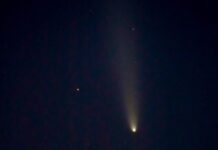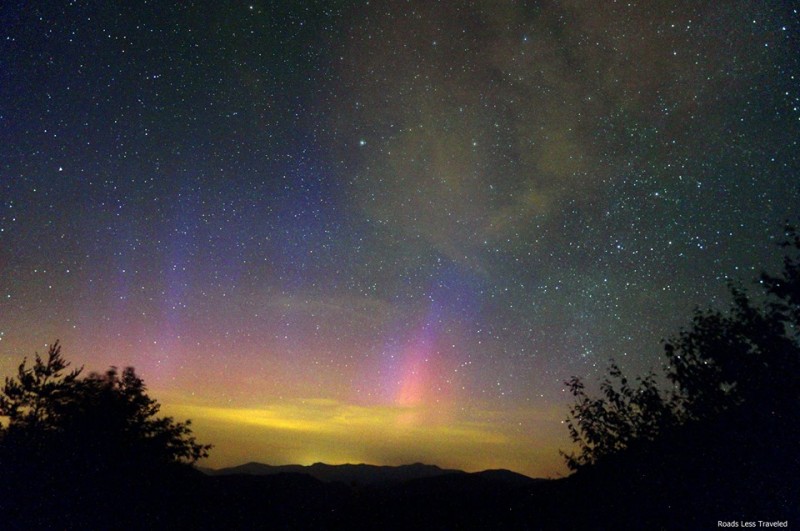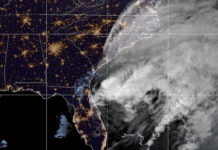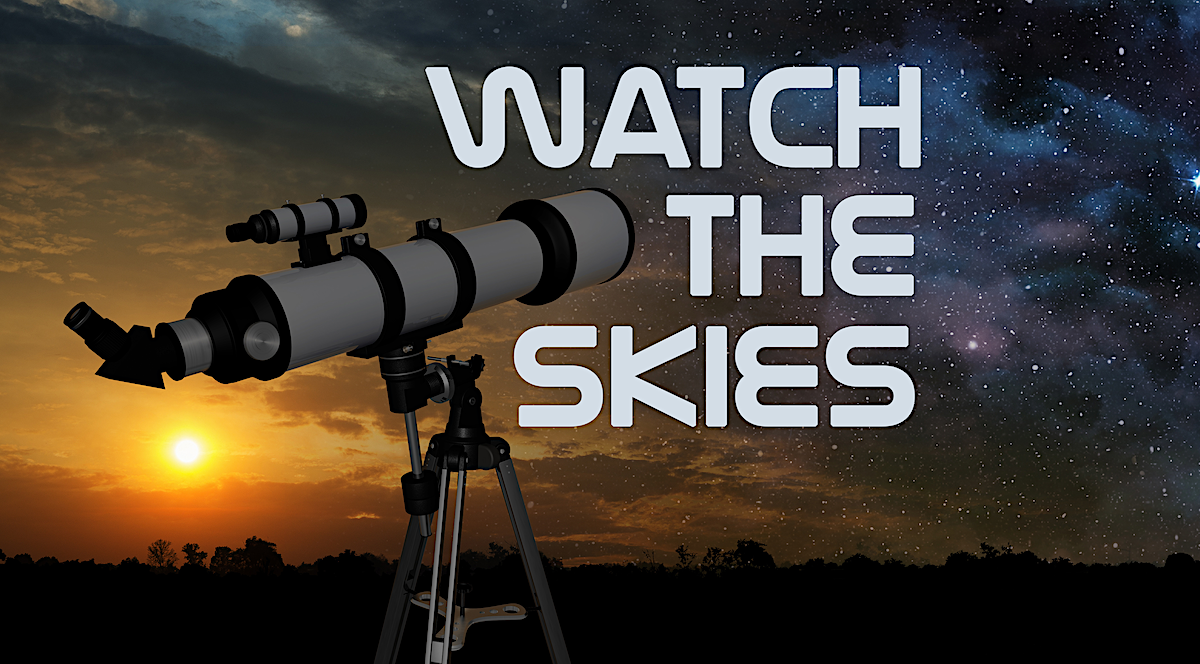
The Planets this Week: Venus is on the downhill run of it’s current cycle setting earlier each night. It remains bright and now appears in it’s half phase when viewed through a telescope. It will get less and less illuminated eventually appearing as a crescent in another month. Saturn and Jupiter are high in the southern sky by 10PM and both are excellent targets for binoculars or telescopes this week.
Naked Eye Object of the Week- The Moon: Way back in June we focused on the moon and I just wanted to go back and touch up on some lunar geography since we have another full moon coming up on Monday, September 20. The Earth facing side of the moon is considerably more interesting visually than the “dark”, or non-Earth facing, side. The map below shows topography and while the far side is certainly more mountainous, there aren’t many “mares” or seas that make up the dark areas we see from Earth.

There are thousands of craters on the moon, and a few of these are big enough to easily be seen with the naked eye. People have been drawing the moon for thousands of years, but mapping it didn’t begin until the 1500’s. The advent of the telescope allowed for more detailed maps with the first lunar atlas being produced by Johannes Hevelius in 1654. These days we probably know more about the moon’s surface than the do the surface of the ocean.
The most striking crater is no doubt Tycho. When looking at the moon it stands out on the south end and is roughly 53 miles wide. This isn’t particularly big but the crater is young enough that you can still easily see the rays of debris emanating out from the impact site. Over time these will fade as they are bombarded by tiny, dust-sized meteorites. Young is a relative term, though, as dating from debris brought back by Apollo 17 gives this crater a rough age of 100 million years old. Copernicus is another prominant crater located just left of center when looking at the moon. It is significantly older (around 800 million years old) and the crater Kepler is located just to its left. Langrenus is easily located on the right side and is bordered by one of the many lava plains. Aristarchus is the brightest crater and is completely surrounded by dark lava plains. It is a fairly young crater and appears nearly twice as bright as other areas on the moon.

These lava plains are what makes the Earth facing side so interesting, as they form the dark areas we see. These “seas/mares” of lava formed when the moon was very young, and they themselves are riddled with small craters. The Sea of Tranquility where Apollo 11 landed is the dark, nearly round sea located above the center of the moon. Mare Crisum (the Sea of Crises) is also nearly round and located on the upper right corner. The largest sea is known as Oceanus Procellarum, or the Ocean of Storms, and makes up a large portion of the left side of the moon.
Head out this week and take a peek at the full moon and maybe do some lunar geography while you are at it!
Telescope Object of the Week- Pluto: Did you hear about Pluto? That’s messed up, right? Or so says a character from my favorite TV series. Pluto is a beloved planet by many, even though it is no longer technically a planet but rather a dwarf one. Pluto was discovered in 1930 by Clyde Tombaugh. It is very small, smaller than Earth’s moon, and orbits in an ellipse that ranges from 7.37 billion kilometers at its farthest to 4.4 billion kilometers at closest. It takes 248 years for Pluto to orbit the sun and a day lasts around 153 hours.
Pluto has 5 known satellites with the largest being Charon. Charon is large enough that Pluto actually orbits Charon in it’s own tiny circle with a center point outside the planet. This is the only moon in the solar system that has that quality with its parent. Very little was known about Pluto until 2015 when New Horizons became the first satellite to fly by and study tiny dwarf planet.
Launched in 2006, New Horizons took 9 years and a gravity assist from Jupiter to reach Pluto. On July 14, 2015 it made its closest approach to the planet and during its flyby it took thousands of images and measurements. Due to it’s quick movement it only studied the northern hemisphere of Pluto but what it found was astonishing. Prior to New Horizons it was believed that Pluto was basically a ball of ice with very minimal surface features. New Horizons found a surface littered with ice and craters, including a giant glacier shaped roughly like a heart.
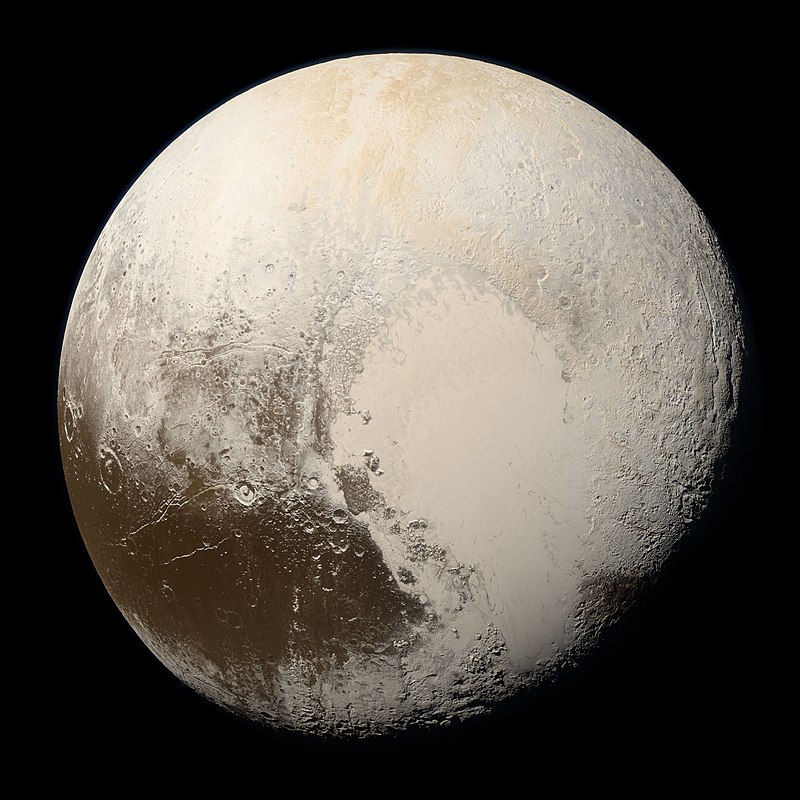
Pluto has an atmosphere which was analyzed by the spacecraft and found to contain mostly nitrogen with bits of methane and carbon monoxide. So, from Pluto, the sky would appear just slightly blue! The surface would appear reddish to the naked eye as seen in the image above with wide areas of nitrogen ice forming the glaciers.
Pluto is extremely dim and hard to see in a telescope. At least a 12″ aperture is suggested for trying to view it but it can be found using star charts. It moves very slowly across the sky relative to the background stars but not quickly enough to be noticeable. This is by far the dimmest object I have covered but if you have a large enough telescope you can perhaps pick it out as a tiny dot against the black. I was able to see it years ago from the University of North Georgia’s 16″ telescope and, while cool, it is quite unimpressive.
Head out this week and take a peek at the moon while it’s full!
As always, watch the skies!





